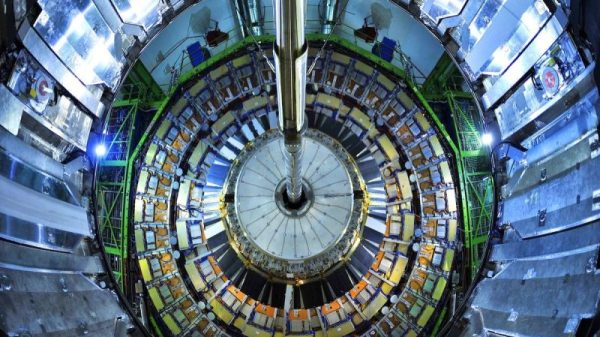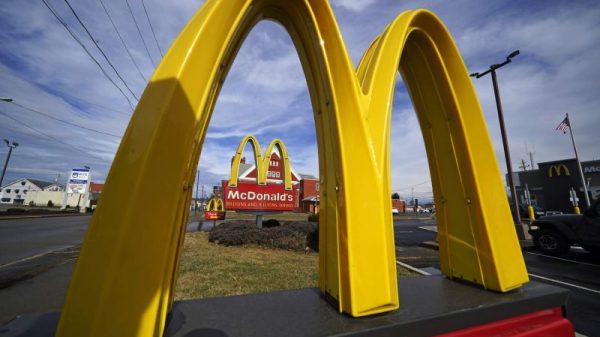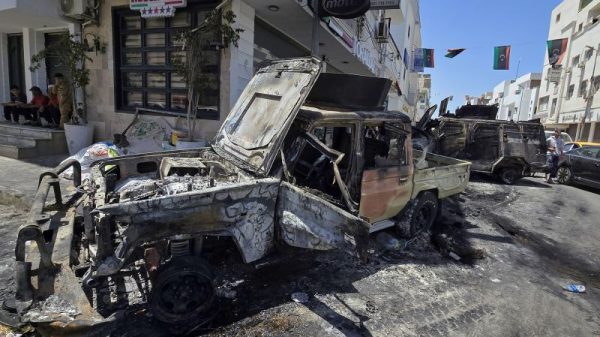Seven weeks into Israel’s ground operation in Gaza, one of the key challenges facing the Israeli military is the labyrinth of Hamas tunnels that it says spans the entirety of the Strip.
If successful, flooding could be ramped up to degrade the tunnel network on a larger scale.
The method, however, is difficult and controversial. Even if implemented with sufficient amounts of water at high enough pressure, it may prove only partially successful. It also risks contaminating freshwater supplies and damaging whatever infrastructure remains on the surface.
For the Israeli government, it also risks killing hostages still held by Hamas in Gaza, many of whom are believed to be underground.
The Israelis are unsure whether the method will work, the American official said, but they assured the US that they are being careful to only test it in tunnels where they do not believe hostages are being held.
A spokesperson for Hamas on Thursday said the group had built its tunnels to withstand possible attempts to pump water into them.
“The tunnels were built by well-trained and educated engineers who considered all possible attacks from the occupation, including pumping water,” Hamas spokesperson Osama Hamdan told a news conference in the Lebanese capital Beirut.
The tunnels however have also acted as an economic lifeline for Gaza’s residents, transporting people, goods and sometimes even American fast food amid a 17-year blockade imposed by Israel and Egypt.
A tool of warfare
Tunnels have historically been used as a tool of warfare. They were used by the French in the interwar period, by al Qaeda in the mountains of Afghanistan and by the Viet Cong in the jungles of Southeast Asia.
Hamas’ tunnels are unique, however. They are “very innovative in their depth, in their sophistication, in their mining, in their trapping,” said Danny Orbach, a military historian at the Hebrew University of Jerusalem.
The subterranean structure is allegedly built under most of the Gaza Strip – a densely populated territory that is home to more than 2 million people – and by some accounts reaches a couple of hundred feet underground.
Hamas’ tunnels can be large enough to fit adult fighters, weaponry, goods and even cars, according to experts and footage released by the group. Some are reinforced with thick cement walls or are separated by metal doors, and not all of them are connected, experts say.
The scale of the Israeli military’s tests is unclear: how much water and how much pressure it is using to flood the tunnels it or even which tunnels it is targeting.
For the operation to succeed, the pressure with which the water is pumped into the tunnels would have to be high enough to destroy not only the cement walls, but also the thick, metal doors separating some of them.
At the very least, Orbach says, the flooding operation could force Hamas militants to move within the tunnels, which would aid Israeli intelligence in identifying militants and possibly hostages.
There will likely be complications
The method of shutting down tunnels by flooding them isn’t new for Israel or Gaza.
In an effort to shut some of the tunnels allegedly built by Hezbollah on the Israel-Lebanon border, the IDF in 2018 flooded them with cement, which ended up spilling out onto the surface in the southern Lebanese village above the structure.
Similarly, Egypt in 2013 began flooding tunnels running underneath its shared border with Gaza, using seawater, sewage water and cement to halt what it said was the smuggling of weapons by Islamist insurgents from the Strip into its Sinai Peninsula.
The water that flooded the tunnels rose to the surface, destroying crops, contaminating fresh water supplies and risking the spread of disease, Palestinian factions in Gaza later said.
The Israeli military said this month that it destroyed at least 500 tunnel shafts in Gaza and located more than 800 around the Palestinian enclave. The IDF said last week that many of the tunnel shafts “were located in civilian areas” and inside civilian structures.
But the flooding process could have a devastating impact on the territory, depending on how it’s done.
Flooding tunnels underneath populated areas risks damaging the infrastructure that remains intact in the territory. It also risks contaminating the source of its freshwater, experts said.
“I see one problem with seawater (flooding) for example,” Orbach said. “Gaza is a very sandy topography. That means that seawater can leak down and destroy the aquifers, the drinking water.”
The territory’s only freshwater resource, the Coastal Aquifer, is already being increasingly depleted by over-extraction and contaminated by sewage and seawater infiltration, according to Amnesty International.
The war has significantly curtailed access to drinking water, with aid agencies warning that Palestinians are being forced to drink dirty or salty water to quench their thirst, increasing risks of waterborne diseases.
If the entire network of tunnels is flooded, buildings on top of them could also collapse, Orbach said, adding that the damage could be extensive because so many of them are under civilian infrastructure.
The goal of the flooding, however, may not be to completely destroy the tunnels at this time, some experts said.
“Because the tunnels are so extensive and because so many of them are dug under infrastructure, buildings and schools and what not, there is a desire to incapacitate them in the moment, even if it doesn’t fully destroy them,” said Matthew Levitt, director of the Reinhard program on counterterrorism and intelligence at The Washington Institute for Near East Policy. The Israelis could work with a post-war governing body in Gaza about completely dismantling the tunnel network, he added.
“I imagine there is a consideration of how much seawater is necessary to make a tunnel unusable, as opposed to putting people’s lives at risk,” Levitt said, referring to the hostages believed to still be underground in Gaza.
“I think people have a vision of flooding the tunnels as pumping so much water in that the entire tunnel is without oxygen and just filled with water,” he said, “and I imagine that is not the case.”
Hostages may be in the tunnels
The most pressing concern for most Israelis today is the dozens of hostages still in Gaza, with many believed to be held underground.
The Israeli government is under intense public pressure to retrieve the hostages alive.
Leaked audio recordings of a meeting between freed hostages and Prime Minister Benjamin Netanyahu this month revealed anger at the prospect of flooding the tunnels.
A freed female abductee whose husband remains in captivity is heard on one recording as saying: “And you are talking about washing the tunnels with sea water? You are shelling the route of tunnels in the exact area where they are,” referring to heavy bombardment above of the tunnels.
Some of the hostages released by Hamas in October spoke about the tunnel system, describing the structure as a spiderweb.
Adina Moshe, who was dragged from her safe room in Israel and taken to Gaza on October 7th, was forced into tunnels five stories underground, according to her nephew Eyal Nouri.
“The bottom line is that Hamas invested tremendous time and money in this infrastructure, which is not for the benefit of the people in the Gaza Strip,” Levitt said, adding that from Israel’s perspective, it remains one of the most important military-critical infrastructure targets. “So, by one means or another, one can certainly expect that Israelis are going to be looking to disable the Hamas tunnel system.”







































